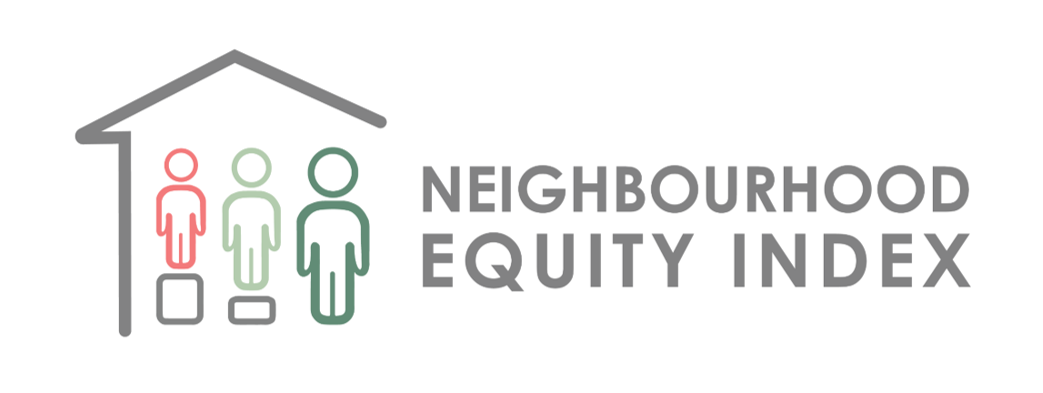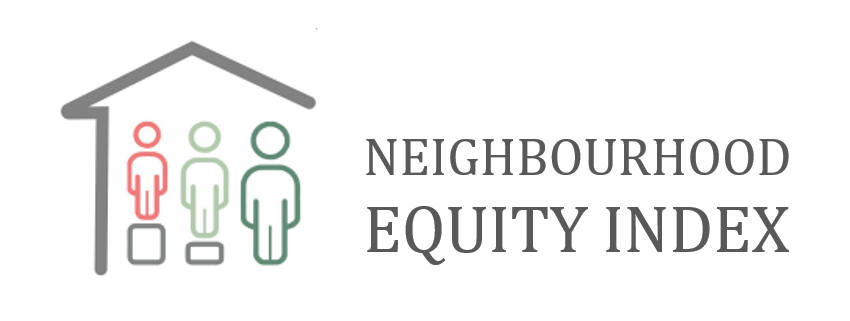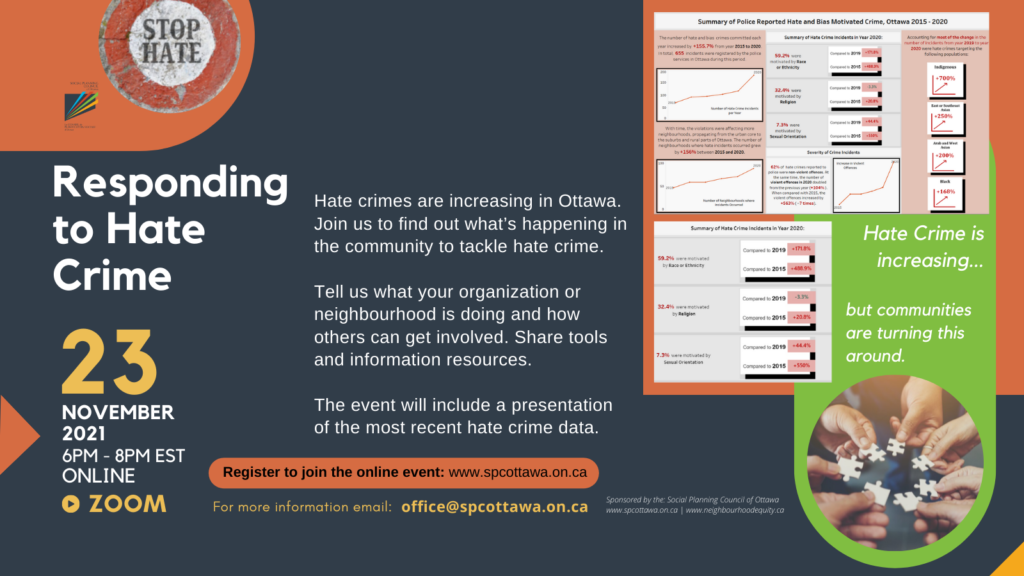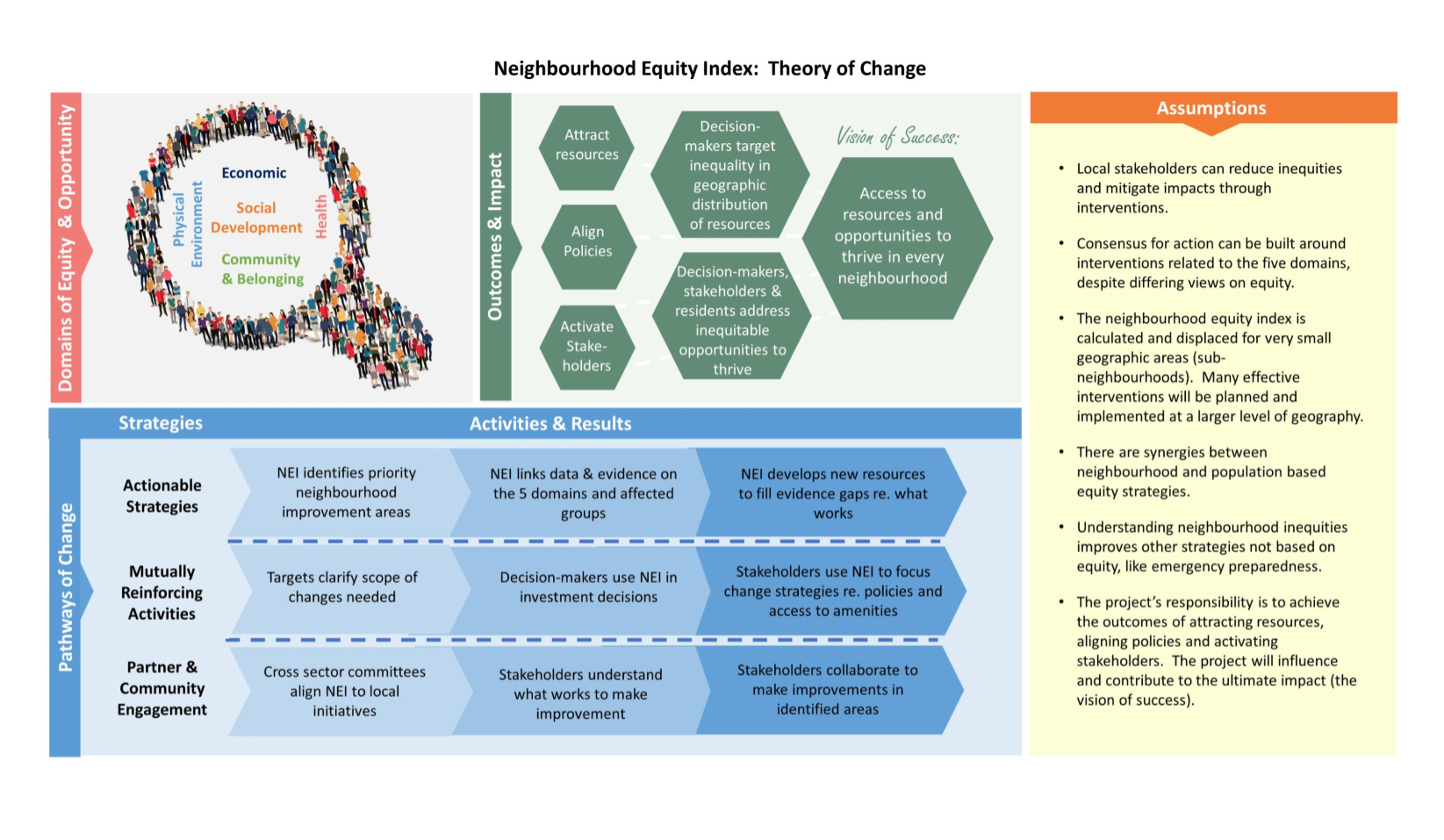Hate Crime
Police Reported Hate and Bias Motivated Crime, Ottawa 2015 – 2020
This visualisation is based on hate and bias motivated crime incidents that were reported to the Ottawa Police Service between 2015 and 2020.
Hate crimes have a disproportionately greater effect on their victims than other types of crimes. Hate-motivated crimes have longer lasting serious side-effects for society as a whole. A hate-motivated crime not only victimizes the individual, but also the entire group the person belongs to, resulting in the increased isolation, stress, and vulnerability of that particular group.
How to Use the Dashboard
This visualization can be viewed in a full-screen mode by clicking the icon at the bottom-right corner of the presentation window: ![]() .
.
To share or download the presentation click on the corresponding icon from the toolbar at the top-right of the window: ![]() .
.
The multiple pages of this dashboard present different dimensions of the data. Use the navigator at the top of the dashboard to browse through the presentation.
The filters available on some of the pages allow to narrow down the data to a specific year, crime motivation, or neighbourhood.
About the Data
- The Police Reported Hate and Bias Motivated Crime dataset contains hate and bias motivated incidents that were reported to the Ottawa Police Service between years 2015 and 2020.
- A police-reported hate crime is defined in section 718.2(a)(i) of the Criminal Code as “a criminal violation against a person or property motivated by hate, based on race, national or ethnic origin, language, colour, religion, sex, age, mental or physical disability, sexual orientation or gender identity or expression, or any other similar factor.”
- To ensure personal privacy, occurrence locations have been aggregated to the corresponding neighbourhoods and Statistics Canada census tract areas. The crime statistics published are accurate on the day that they were produced. Due to ongoing police investigations and internal data quality control efforts, this information is subject to change, including addition, deletion and reclassification of any and all data.
- Author: Ottawa Police Service
- Author email: [email protected]
- Data downloaded from Open Ottawa
- Dashboard is prepared by the Social Planning Council of Ottawa
Data Notes
Hate Crime Motivations: The Motivations for Hate Crime categories are defined by the Uniform Crime Reporting (UCR) Survey based on the Criminal Code of Canada [3].
Offence types refer to violations of the Criminal Code [4].
- Property Crimes (or crimes against the property) involve unlawful acts to gain property, but do not involve the use or threat of violence against the person. They include offences such as break and enter, theft, and mischief.
- Violent Crimes (or crimes against the person) involve the use or threat of force to harm another person. This includes homicide, attempted murder, assault, sexual assault, and robbery. Robbery is considered a crime against the person because unlike other theft offences it involves the use, or threat of, force.
- Hate Propaganda: in addition to police-reported incidents that involve a hate crime motivation, there are four specific offences listed as Hate Propaganda and hate crimes in the Criminal Code of Canada:
- advocating genocide;
- incitement of hatred in a public place that is likely to lead to a breach of the peace [public incitement of hatred];
- willful promotion of hatred, all when directed against an identifiable group, and
- mischief motivated by hate in relation to property primarily used for religious worship.
____________________________________________________________________
[3] Uniform Crime Reporting (UCR) Survey: https://doi.org/10.25318/3510006601-eng
[4] Classification of Criminal Code Violations: https://www23.statcan.gc.ca/imdb/p3VD.pl?Function=getVDStruct&TVD=246228&CVD=246229&CPV=1&CST=01012015&CLV=1&MLV=5
Additional Considerations
These data should be used with caution because hate crimes usually are not reported and recorded consistently. Ontario Human Rights Commission (2013)[1] notifies that reported hate crimes to police have limitations as follows:
- it is estimated that two-thirds of hate crime victims do not report them to authorities,
- the numbers of people reporting crimes, varies between communities, and
- there are differences in how victimization is reported and understood (for example, it can be hard to distinguish whether a hate crime is based on race, ethnicity or religion.
A study on racial disparities in hate crime reporting (2010)[2] supports prior assertions that racial hate crime victimization remains underreported. The study shows that racial hate crime victims were not the most likely to report violence to the police; racial minority victimizations were ~35% less likely to be reported than white victimizations.
___________________________________________________________________________________
[1] Ontario Human Rights Commission (2013) Human Rights and Creed Research and Consultation Report. Retrieved from http://www.ohrc.on.ca/en/human-rights-and-creed-research-and-consultation-report
[2] Zaykowski, H. (2010) Racial disparities in hate crime reporting. Violence and Victims, 25(3), 378-394. doi:10.1891/0886-6708.25.3.378






